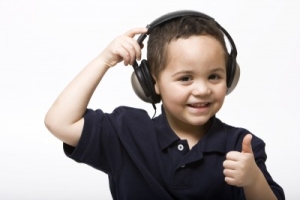
As any parent can tell you, children begin learning at a remarkably young age, and much of that learning is based around the ability to hear. Sound accounts for a large percentage of the sensory information that children take in. Most visual information, whether it’s people talking, traffic on the street or an educational show on television, has some auditory component as well. And even as infants, children begin to mimic speech and other sounds that they hear.
The ability to take in auditory information is vital to children’s development, allowing them to understand and interact with the world around them. Unfortunately, children suffering from hearing loss are denied this kind of sensory input. And studies have shown that children with impaired hearing who do not get the additional help and support that they need often fall behind in school and are delayed socially.
Identifying Risk Factors
In order to best care for children with hearing loss, it’s important to identify risk factors early. Studies have shown that the biggest risk factors for hearing loss include having a close relative that is hearing impaired, suffering from viral infections while in the womb or contracting meningitis after being born. Any one of these conditions can significantly increase the likelihood of a child suffering from hearing loss, but almost 50% of kids diagnosed with hearing loss have no risk factors whatsoever.
Newborn Hearing Screening Tests
The key to helping children with hearing loss is early detection, which is why newborns are routinely given hearing tests. One of these tests is called the auditory brainstem response test. During this exam, doctors place tiny electrodes on the newborn’s head and then stimulate the baby’s ears with clicking noises. If the baby’s hearing is functioning properly, then the clicking sounds stimulate the hearing centers in the brain, which is registered by the electrodes.
The second routine hearing test administered to newborns is the otoacoustic emissions test. For this test, doctors place a small tube in the newborn’s ear. A computer sends sounds through the tube and then checks for correlating movement in the inner ear. If there is damage to the baby’s hearing, then there is no subsequent inner ear movement.
By detecting hearing problems early, parents and doctors can dramatically improve a child’s development. In fact, most hearing-impaired children who get help through language therapy and hearing aids by the age of six months don’t experience a significant developmental delay at all.
If you or someone you know would like to learn more about hearing loss and how to treat it, please feel free to schedule a consultation or contact one of our representatives today!
Call 877-631-9511 for FREE Consultation



